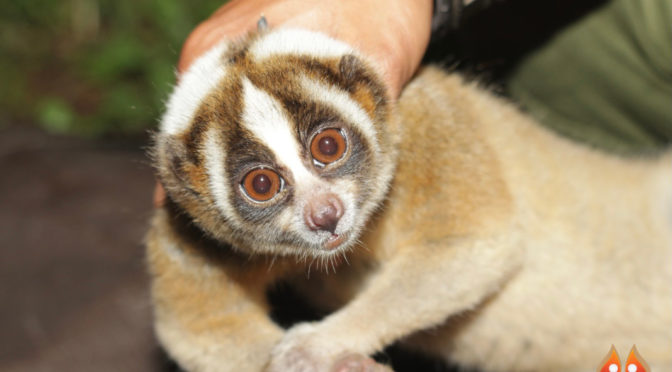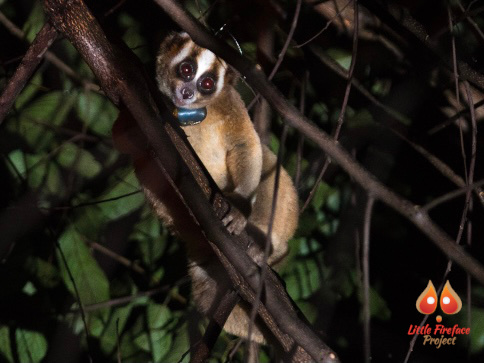I had a wonderful teacher about animal behavior – my dog Rusty. He taught me that animals have personalities, minds, and feelings. – Jane Goodall-
These days, since the pandemic struck, we are likely to have more “me time” for ourselves. Stepping into the quarter-life journey, we begin to ask questions about our existence, like who I am, what is the purpose of our life, etc. We seem to dive more into our personality, doing online tests, understanding extroversion and introversion ideas, or even asking friends “what do you think of me?”
The concept of personality has long become an interesting study topic. The most famous here is the MBTI, or Myers–Briggs Type Indicator, which categorizes human personality traits into some types. Some even link the personality traits with the characteristics of the date when they were born, i.e., the zodiac or Chinese zodiac (in Indonesia, called Shio). However, we are not just one thing. Until now, the concept of personality has still been more interesting to discuss.
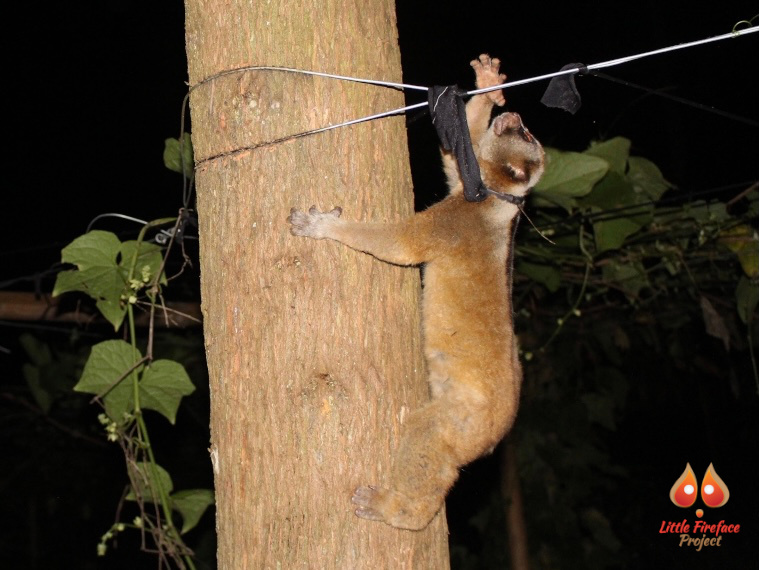
Understanding human personality traits is important either to understand others or ourselves. Stepping out from that, observing Javan slow loris here in Cipaganti for almost two years, made me realize something bizarre: might the loris have a personality? I became aware of this concept while observing various loris, and we know each loris by name because we implanted a collar and microchip to identify them. This idea is reflected in several constant behaviors that I found only in several individuals. Here are a few behaviors that may hint at Loris’ personality in Cipaganti:
A playboy, with adventurous-like behavior, and always exploring tirelessly.
I noticed that some males travel quite excessively. They go far away, out of their territory, or into the territory of another Javan slow loris individual. We do not know what made them do this. In this case, they might be teasing other female individuals, or as a playboy. Yup. Fernando.
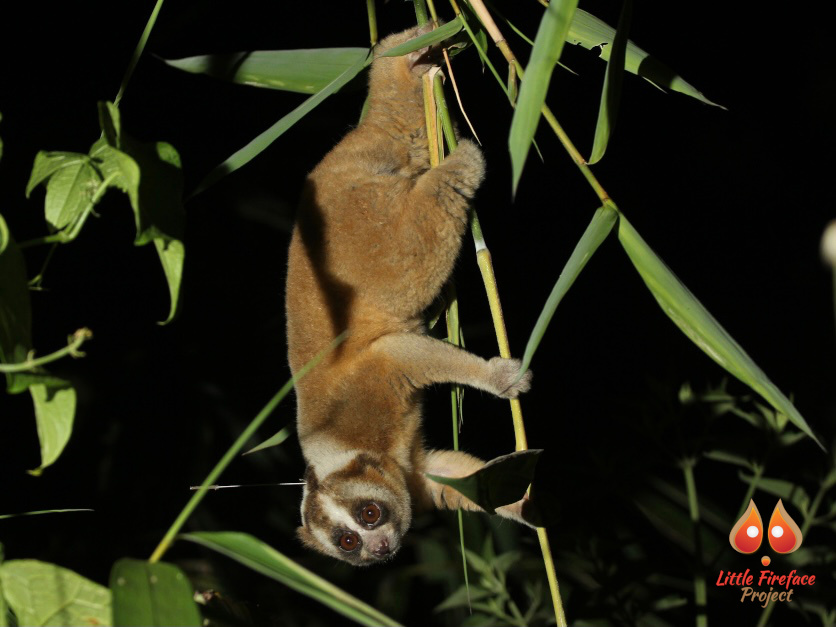
Traveling back and forth, or wishy-washy.
Lucu. This individual has a tendency that is quite funny, because this individual is always exploring back and forth, seems like forgetting something, or doesn’t want to let something go, or it’s hard to make a decision, or I don’t know. What I know is she often comes back to the previous tree, although she has already moved quite far, and when it looks like she has already finished her business on that previous tree. It’s like watching tv shows when someone is irresistibly wanting to go to the bathroom but the bathroom is being used.
The others have a tendency to sleep in unusual places.
Some of you might be able to guess. Yes! They are Acil and Ombe. They were sometimes found sleeping under chayote plants, or in Red Caliandra and Eucalyptus tree. We usually mention that they are sometimes late to come or go back to their bamboo sleeping site or a night when they travel to some areas that don’t have nearby bamboo. Sleeping in trees is something unusual for lorises in Cipaganti. Since we have fewer trees with a dense canopy, bamboo provides the safety and density that lorises need to shield themselves from predators during their dream stage under the sun. The bravery to sleep on a tree other than bamboo, on the other hand, is not found in every other Javan slow loris individual.
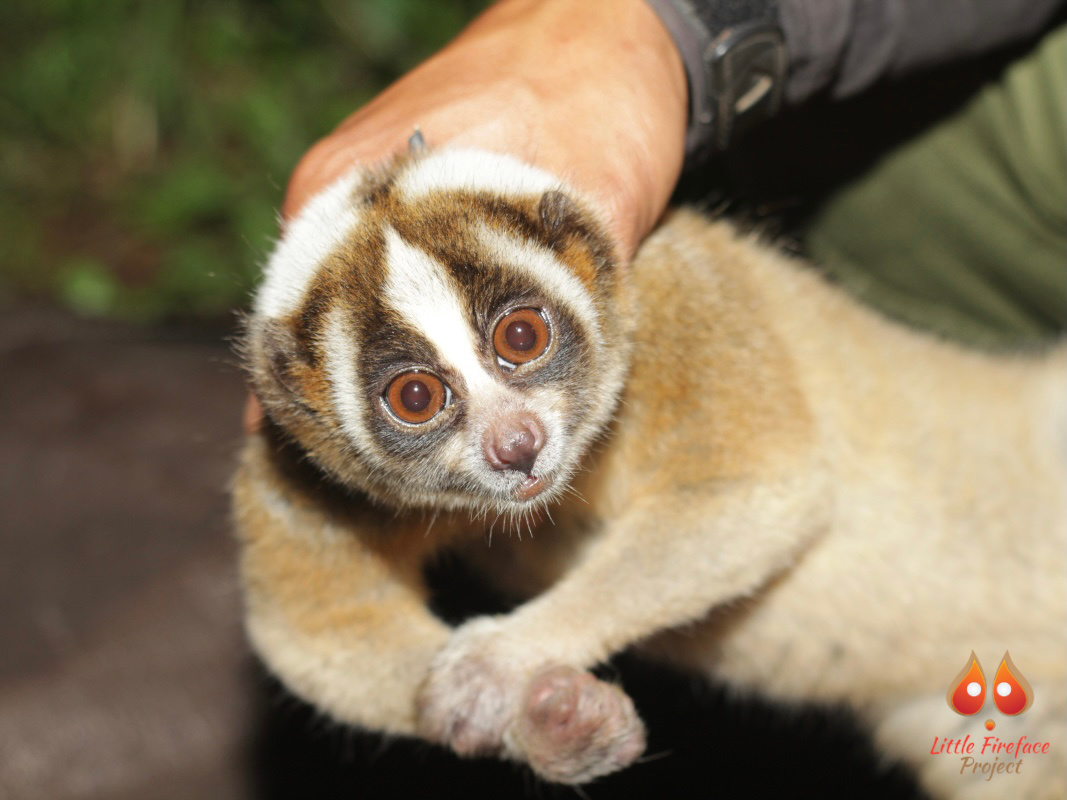
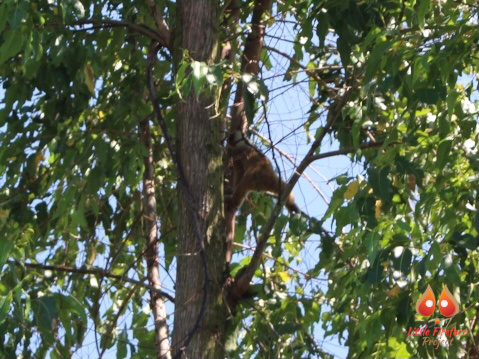
Fiercely eat a lot.
This is Ombe and Solo. Both of them have tendencies to eat like they are doing a race. There are individuals we have observed eating Red Calliandra nectar and Jiengjen tree gum so voraciously that it has been counted as 6 hours of observation. These individuals eat activity for 4 consecutive hours without stopping. I did not observe this activity in other individuals who are likely to be quite relaxed or doing it slowly.
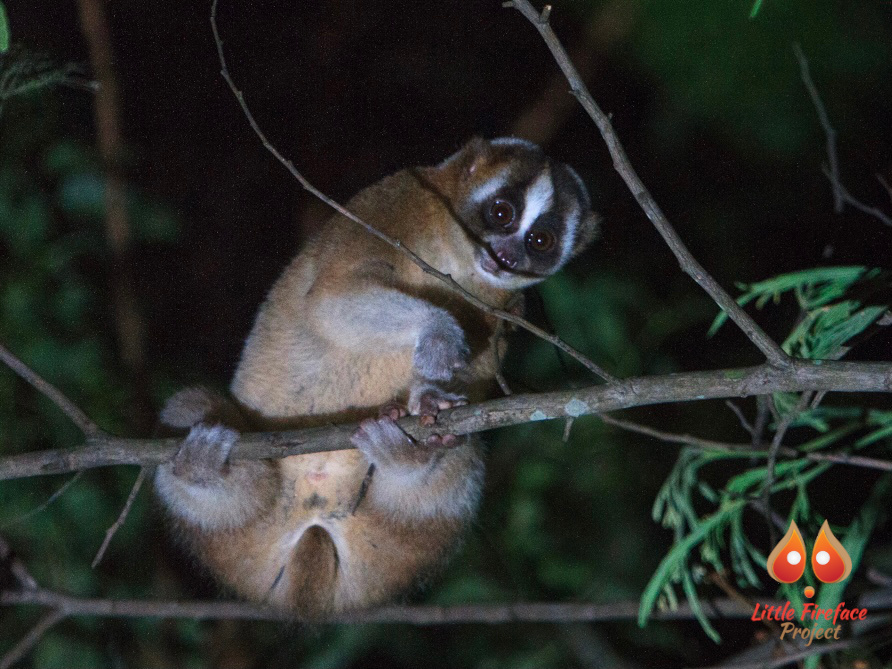
That story makes me think harder about whether those behaviors can be explained on an individual basis, such as having an individual uniqueness and not wanting to look like individuals in general. Apart from the environmental influences (e.g. habitat, weather, humans, etc.) that might be shaping the personality, I found this idea bizarre but interesting. Quite a lot of things are difficult to explain when in the wild. Many other mysteries are yet to be solved. But who knows? We might be able to explain more about this matter in the future.
About the writer: Ahmad Nabil, Research Assistant Nabil has been working on the project for almost two years! Interested in small mammal, camera traping, and anything about field works.

